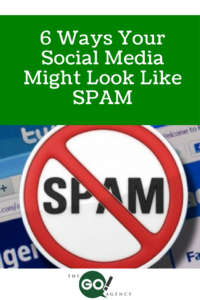Let’s face it. Nobody is a fan of junk mail. It doesn’t get much love thanks to the nature of the message it sends and tends to wind up in a trash bin. The same applies to social media marketing. There is a TON of content on Facebook, Twitter, Instagram, and the other platforms, but you can still spot spam, scams, and solicitations quickly. Is your content getting flagged as junk? Here are the tops methods that are problematic: Drowning your content with an overabundance of hashtags. Sure, hashtags are important, but moderation is key. Don’t be the internet equivalent of a tacky billboard.
Spelling and grammar errors. We’ve seen those emails from the Nigerian prince. Tons of spelling errors. Don’t follow the prince. Write professionally and proper.
Sparse profiles with blank spots. If you want to seem like a real company, make sure all the fields on your profiles are properly filled out. Take time to write precise, engaging copy and optimize those pages!
100% sales posts. You won’t be able to get very far if you only post promotional content. Do you blame your customers? They want more out of their Facebook, Twitter, and Instagram time than weeding through a sea of ads.
Low-quality photos. If a customer has to try to decipher what a picture is because it’s pixelated, there’s a good chance they are going to dismiss your content as nonprofessional. Online spammers snatch whatever image they can get because they can’t afford to buy quality images. Don’t settle for blurry images.
Non-conversational marketing. Your customers want what social media was made for. A conversation! If you aren’t responding to messages or comments, you profiles will seem illegitimate.
It’s much easier to seem like spam than legitimate. It’s synonymous with low quality and low effort. However, if you avoid these 6 big no-nos, your social media marketing will be the real thing!
What other ways can social media marketing come off as spam? Comment below!
Click Here to Subscribe to Our Free Newsletter
Read More












